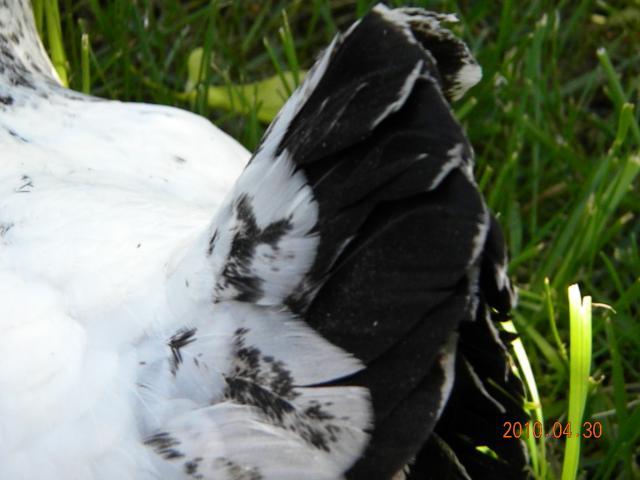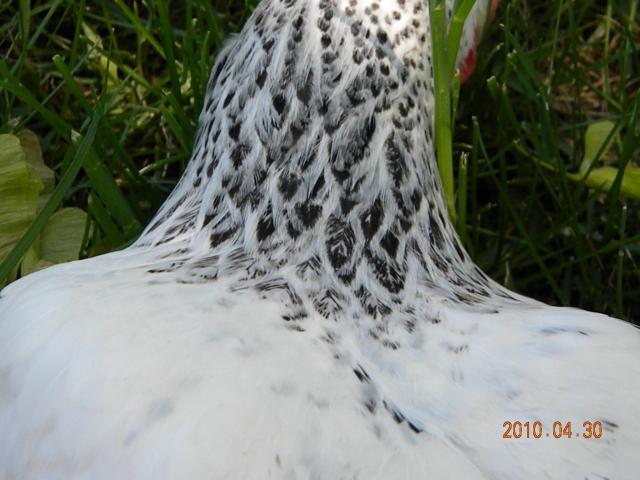The female Del has barring at one end and laced black at the other. Another very difficult situation. In dogs you have recognized colors that are pretty predictable and possibly something like a white chest, forehead, etc to go along with the main color. In addition most of us don't really know how these chickens were "made". A chicken can look like an APA recognized breed and have very little if any of that breed in them.
Walt, you are so right about that one! I have one pullet who looks just like a rich, dark RIR. She has nice single comb, yellow legs, lays a brown egg. Her sire is a BLRW rooster and her mother is an Ameraucana, a Blue/Black/Splash variety (not sure which exact color); I watched her hatch from a blue egg sent to me as an extra by someone. How she came out looking this way is just one of those weird genetics puzzles, though someone did tell me that if the rooster wasn't pure for rose comb and the hen wasn't pure for pea comb, a small percentage come out with single combs. Of course, her body shape is off for a RIR, but if someone doesn't realize that, they'd peg her a RIR and a very nice, dark one.
I've always said the Delaware was very challenging. And we're also dealing with a breed that almost disappeared entirely, so breeding stock was hard to come by, and coming back from obscurity in addition to the different male/female colors makes it really an uphill battle.
Walt, you are so right about that one! I have one pullet who looks just like a rich, dark RIR. She has nice single comb, yellow legs, lays a brown egg. Her sire is a BLRW rooster and her mother is an Ameraucana, a Blue/Black/Splash variety (not sure which exact color); I watched her hatch from a blue egg sent to me as an extra by someone. How she came out looking this way is just one of those weird genetics puzzles, though someone did tell me that if the rooster wasn't pure for rose comb and the hen wasn't pure for pea comb, a small percentage come out with single combs. Of course, her body shape is off for a RIR, but if someone doesn't realize that, they'd peg her a RIR and a very nice, dark one.
I've always said the Delaware was very challenging. And we're also dealing with a breed that almost disappeared entirely, so breeding stock was hard to come by, and coming back from obscurity in addition to the different male/female colors makes it really an uphill battle.






